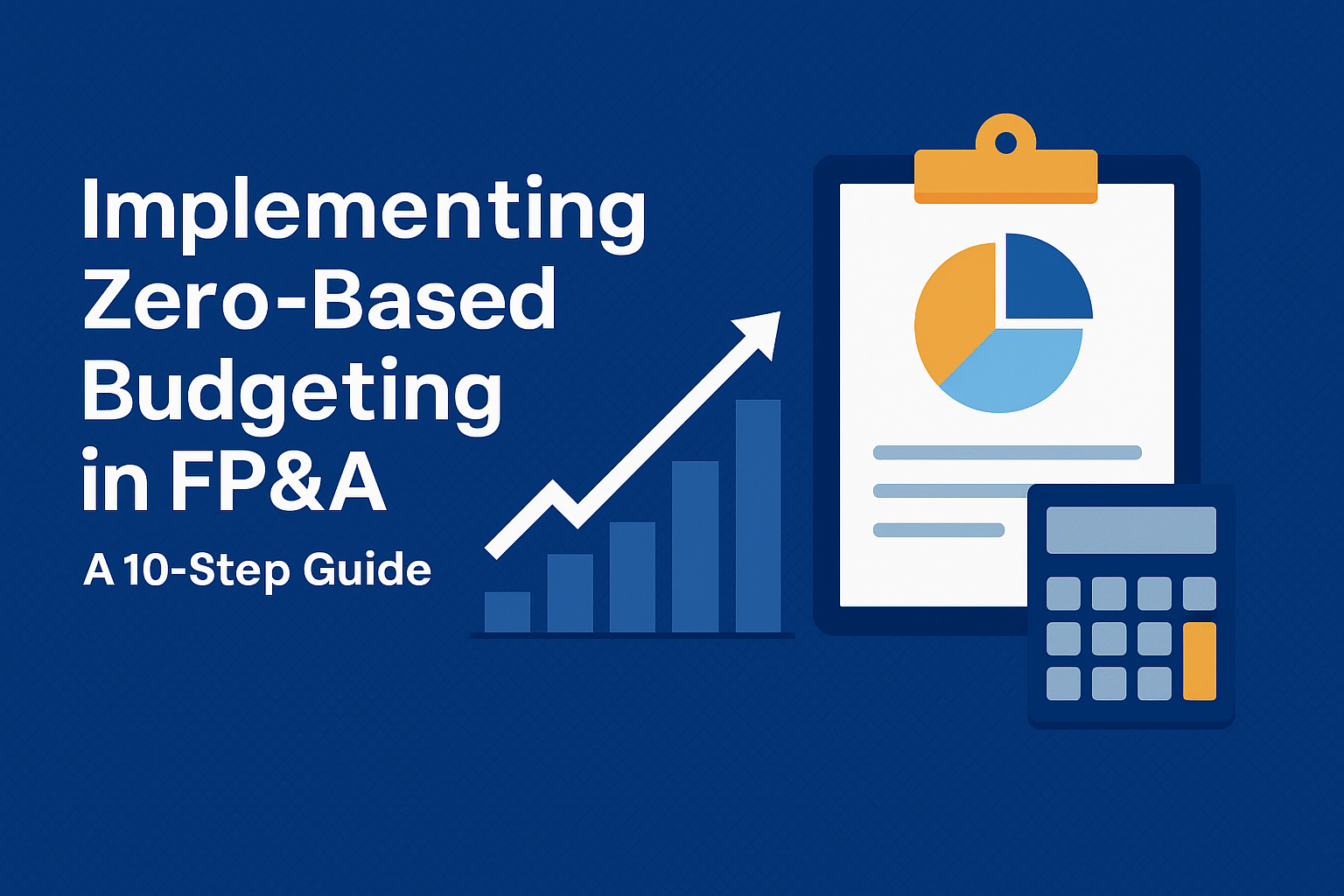The Strategic Art of Breaking FP&A Rules: A CFO’s Guide for SaaS Growth
There are rules in FP&A for a reason. I respect them. I really do. But after a decade in SaaS finance, I’ve learned that sometimes the difference between stagnation and breakout growth comes down to knowing which rules to bend, which to challenge, and which to quietly throw out the window.
This isn’t about reckless forecasting or winging it with Excel. It’s about strategy. It’s about context. It’s about understanding when the rigid FP&A frameworks that worked in the last stage of your company’s growth can’t get you to the next one.
Welcome to the uncomfortable but necessary art of breaking the rules—on purpose.
The DNA of Standard FP&A: What Works (and What Doesn’t)
Every SaaS finance team starts with a playbook: revenue waterfalls, cohort analysis, CAC/LTV ratios, scenario models, and the classic three-statement forecast. These tools are indispensable. They help us:
- Communicate clearly with investors
- Build internal confidence in growth decisions
- Align departments on spend and performance
But here’s the rub: as the business grows, the tools don’t scale on their own. The same FP&A operating model that served a $10M ARR business will buckle under the weight of $50M ARR complexity.
That’s when the rigidity of FP&A best practices starts to become a bottleneck.
Rule #1 Worth Breaking: Forecasting Based on Historical Averages
Many finance teams default to historical performance for forecasting. It’s clean. It’s comfortable. But in growth-stage SaaS, it can lead to overly conservative plans.
When forward-looking signals—like sales velocity, product-market fit shifts, or pricing experiments—start to diverge meaningfully from historical averages, it’s worth breaking from the norm. These indicators can tell a more accurate story of what’s to come.
Lesson: When there’s credible signal from current operations, the past shouldn’t steer the ship.
Rule #2 Worth Breaking: Strict Departmental Budget Guardrails
Static budget caps make sense in low-growth or cost-cutting environments. But in SaaS scale-ups, value creation often hinges on seizing time-sensitive opportunities.
Think of events, hires, or campaigns with strong return profiles that emerge mid-quarter. If the only answer is “wait until next quarter,” the opportunity may be gone.
Lesson: Budget discipline is vital—but it should be dynamic, not dogmatic.
Rule #3 Worth Breaking: The Worship of Net Retention
Net retention is a powerful SaaS metric. But it can mask underlying fragility if overemphasized.
For example, a product team optimizing only for expansion may miss deeper issues in onboarding or user engagement. A healthy NR number doesn’t guarantee sustainable growth if acquisition costs are climbing or early churn is rising.
Lesson: Treat metrics like signals, not absolutes. Zoom out often.
Rule #4 Worth Breaking: The Quarterly Cadence
Quarterly planning is a staple in finance. It brings order. But product innovation, market opportunities, and hiring windows don’t always operate on clean quarterly timelines.
When external signals or strategic shifts emerge, be willing to break cadence. Mid-cycle adjustments, real-time reallocations, or off-cycle updates can be essential to stay competitive.
Lesson: Let operating reality drive your calendar, not the other way around.
When to Break the FP&A Rules
| FP&A Rule | When to Break It | Risk if You Don’t |
|---|---|---|
| Forecasting based on history | When leading indicators show a market shift | Missed upside or delayed response |
| Rigid departmental budgets | When validated opportunities exceed allocations | Stifled growth |
| Net retention obsession | When it hides acquisition or churn issues | Long-term decay masked by expansion |
| Quarterly-only review cadence | When real-time signals require faster response | Reacting too slowly to external change |
Bullet Points: Signs You Need to Break a Rule
- Your top-line plan feels “safe,” not bold
- Opportunities are being missed due to timing, not merit
- Teams are working around the model, not with it
- You’re saying “no” to high-ROI bets due to budget boxes
- The model is defending old assumptions, not testing new ones
The Cost of a Broken Forecast
Many finance leaders have seen it: a forecast that seemed solid, but under scrutiny, reveals flawed assumptions or stale links. Often, these errors are subtle—a formula pulling from an outdated data tab, an overlooked assumption that no longer holds.
It’s rarely catastrophic. But it chips away at confidence. And in finance, trust is hard-won and easily lost.
Two things I always keep in mind:
- A model is only as strong as its weakest assumption.
- One bad link or outdated assumption can compromise the whole.
- Hygiene matters as much as accuracy.
- Validate assumptions. Audit links. Keep the plumbing clean.
I now treat models like infrastructure—they need maintenance, not just building.
Why Breaking Rules Is a Strategic Act—Not Rebellion
Some people think rule-breaking in finance is reckless. But I think it’s disciplined. It requires:
- Understanding which assumptions your model depends on
- Knowing when those assumptions break down
- Having the courage to challenge past practices when conditions change
Good FP&A is about control. Great FP&A is about adaptation.
Break the Rules, But Keep the Trust
Here’s the paradox. The more strategically you break the rules, the more trust you need to maintain. It’s a high-wire act. But it’s how real growth happens.
You’re not breaking the rules to be cute. You’re doing it because you’re seeing around corners. That’s the job.
So check your links. Know your constraints. But don’t be afraid to kick the model when it needs a reboot.








